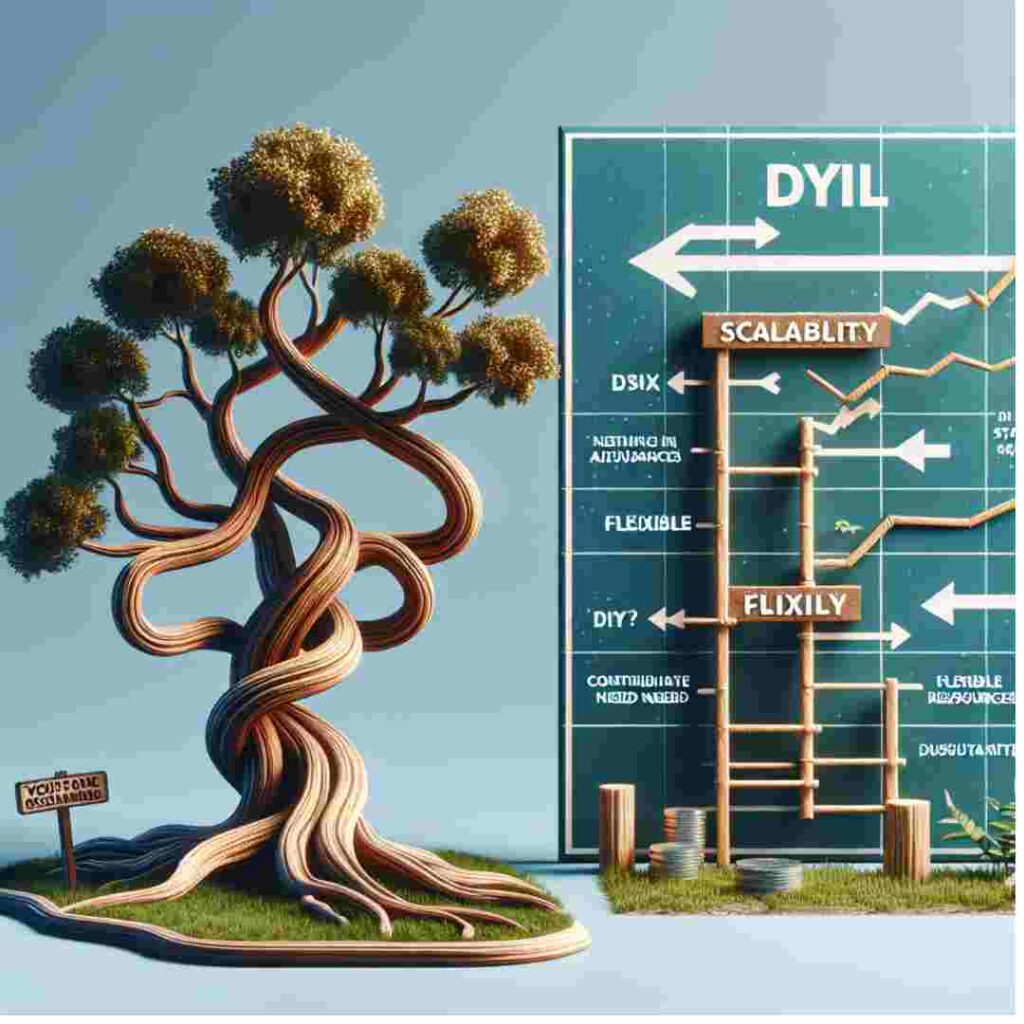In the fast-paced world of entrepreneurship, small business owners and marketers often face tough decisions that can make or break their ventures. One of the most common dilemmas is choosing between premium solutions, which typically come with a higher price tag, and do-it-yourself (DIY) options, which can save money upfront but might require more legwork. This decision can affect everything from productivity to customer satisfaction and long-term growth.
This guide is crafted specifically for entrepreneurs, small business owners, and marketers at this crossroads. We’ll walk you through the pros and cons of premium and DIY approaches across various business functions. You’ll better understand which choice aligns best with your business goals and resources. Whether you’re just starting or looking to optimize your existing operations, gaining insight into these options will empower you to make informed decisions that drive success.
Understanding Premium Solutions
Premium solutions are products or services offered at a higher price point due to enhanced features, quality, or service. They are often marketed as ‘all-in-one’ solutions designed to save time, boost efficiency, and provide expert-level results with minimal effort.
One critical advantage of premium solutions is their ability to provide immediate and tangible benefits. For instance, a premium email marketing platform might offer advanced analytics, personalized customer experiences, and robust automation capabilities. These features can significantly enhance your marketing efforts and increase conversion rates.
However, the cost can be a barrier for many small businesses. It’s essential to weigh whether the benefits justify the upfront investment. By considering the long-term savings in time and resources, premium solutions often pay for themselves over time.
The Appeal of DIY Approaches

DIY solutions, on the other hand, are those that you create or manage independently using available resources or open-source software. These solutions are often seen as a cost-effective way of handling business needs without the recurring costs associated with premium services.
One of the most appealing aspects of DIY is the control it offers. You get to customize your solution to fit your exact needs and have complete oversight of the process. This is particularly useful for businesses with unique requirements that need to be addressed by one-size-fits-all solutions.
However, DIY can be time-consuming and require a certain level of expertise. It can lead to costly errors if you need to become more familiar with the tools or processes. It’s crucial to assess whether you have the skills and time to implement a DIY solution effectively.
Cost Considerations
When deciding between premium and DIY, cost is often the first consideration. Premium solutions typically involve subscription fees or one-time payments that can strain a tight budget. However, they may offer value through increased efficiency and reduced risk of errors.
DIY options can appear cheaper at the outset since they leverage free or low-cost tools. Yet, they might lead to hidden costs, such as the time investment required to learn and maintain the solution. Additionally, there might be costs associated with troubleshooting and upgrading DIY solutions as your business grows.
The decision should reflect your budget constraints and long-term financial goals. Conduct a cost-benefit analysis and consider each option’s direct and indirect costs.
Assessing Your Needs

Before making a decision, conduct an in-depth assessment of your business needs. Start by identifying the core functions of your business that require support. Are you seeking help with marketing, customer management, or inventory tracking? Each function may have different requirements that could sway your decision.
Consider the scope of your operations and the level of sophistication required. A DIY spreadsheet might suffice if you run a small boutique with simple accounting needs. Conversely, investing in premium accounting software with advanced features will yield better results if your business is scaling rapidly.
Understanding your needs will guide you toward the most appropriate solution, ensuring you pay attention to necessary features and underserve essential business operations.
Evaluating Time and Expertise
Time and expertise are critical factors when deciding between premium and DIY solutions. Premium solutions are often ready-to-use and come with support, freeing up your time to focus on other aspects of your business. They are ideal for entrepreneurs who need more time or inclination to manage the intricacies of a DIY approach.
On the other hand, if you or your Team possess the necessary skills and a willingness to learn, a DIY solution might be more rewarding. It allows for complete customization and can be more satisfying to those who enjoy hands-on projects and problem-solving.
Ultimately, ask yourself if the time saved by opting for a premium solution is worth the cost or if investing time in a DIY approach will offer more value in the long term.
Scalability and Flexibility

Scalability and flexibility are vital considerations, especially for growing businesses. Premium solutions often come with scalable plans that can grow alongside your business. They provide the infrastructure to handle increased demand with minimal disruption.
While flexible in customization, DIY solutions may only sometimes scale smoothly. They might require significant adjustments or even a complete overhaul as your business needs evolve. Before settling on a DIY approach, evaluate whether it can adapt to future growth without substantial additional costs or time.
Consider your long-term vision and ensure the chosen solution can accommodate your business’s trajectory without frequent changes.
Security Concerns
Security is a top priority for any business, mainly when dealing with customer data and sensitive information. Premium solutions usually offer robust security features, including regular updates, data encryption, and compliance with industry standards, reducing the risk of data breaches.
DIY solutions may sometimes provide a different level of security, especially if you need to be better versed in cybersecurity protocols. You’ll need extra time and possibly external resources to secure your DIY system.
Weighing security is essential, as compromising your business’s safety can lead to significant financial and reputational damage.
Integration Capabilities

Integration capabilities are essential for businesses looking to streamline operations across multiple platforms. Premium solutions often come with integrated tools and APIs that allow seamless connection with other software, enhancing overall efficiency.
DIY solutions require manual integration or third-party tools, which can be cumbersome and prone to errors. Consider whether the solution you choose can easily integrate with your current systems or if you’ll face challenges connecting disparate tools.
Strong integration capabilities can simplify workflows and save time, making them a crucial factor in your decision-making process.
Exploring Customer Support Options
Customer support can significantly improve a solution’s user experience. Premium services typically offer dedicated support teams ready to assist with implementation, troubleshooting, and ongoing maintenance.
DIY options might need more support, leaving you to resolve issues independently or seek help from online forums and communities. Consider your comfort level with managing potential problems and whether having access to professional support is worth the investment.
Reliable support can alleviate stress and ensure your solution operates smoothly, providing peace of mind for busy entrepreneurs.
Building a Community

One often overlooked benefit of premium solutions is access to a community of users. These communities offer valuable insights, support, and networking opportunities for businesses facing similar challenges.
While DIY solutions may have online forums, they provide a different level of engagement or resources. A vibrant community can be a treasure trove of knowledge and inspiration, helping you troubleshoot and innovate as you grow.
Evaluate whether access to a community aligns with your business goals and if it can enhance your overall experience with the solution.
Making the Decision
After considering all these factors, it’s time to make your decision. There’s no one-size-fits-all answer; the right choice will depend on your unique business circumstances. Balance your budget, expertise, and business needs to select the most suitable solution.
Remember that your decision isn’t set in stone. Businesses evolve, and so do their needs. Stay open to reassessing your choice periodically to ensure it continues to serve your best interests.
Conclusion
Navigating the choice between premium and DIY solutions is challenging but critical for business owners or entrepreneurs. By understanding the advantages and limitations of each approach, you can make informed choices that align with your goals and resources.
This guide has provided a comprehensive overview, but the final decision rests on your shoulders. To gain further insights, consider seeking the advice of peers, mentors, or industry experts.
Take the time to evaluate your options thoroughly. Whether you choose a premium solution for its convenience or a DIY approach for its flexibility, the key is to select what empowers your business to thrive.











